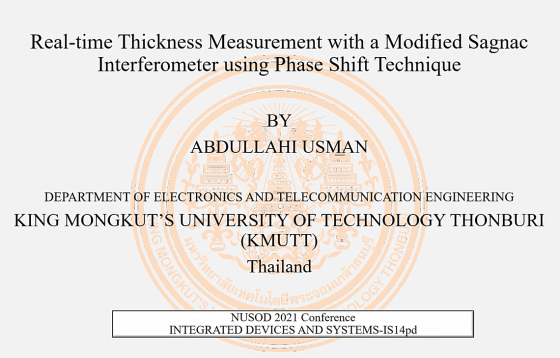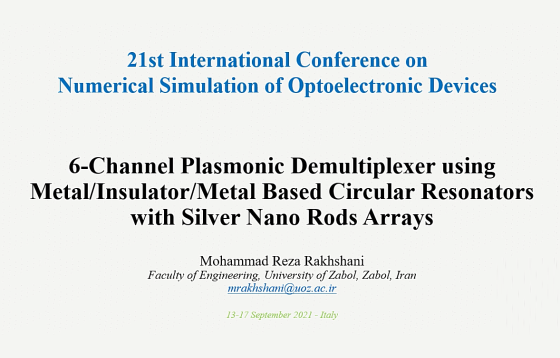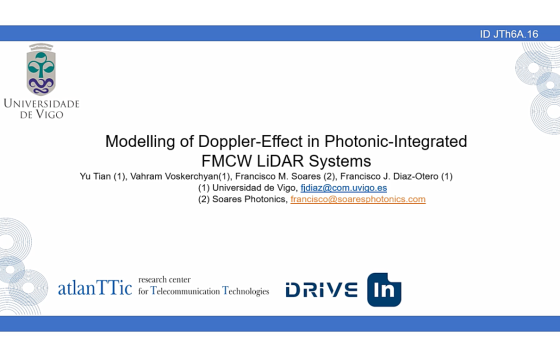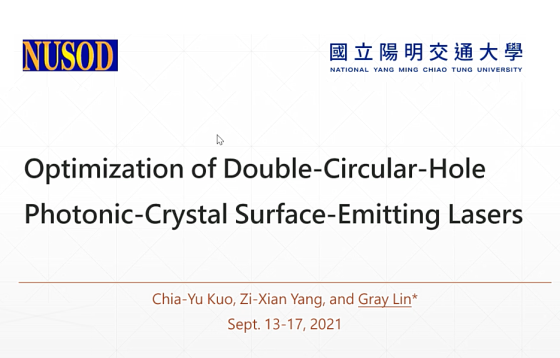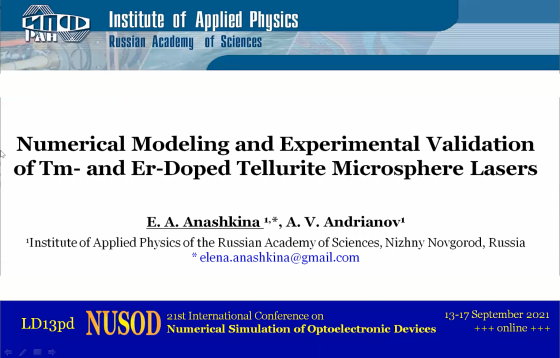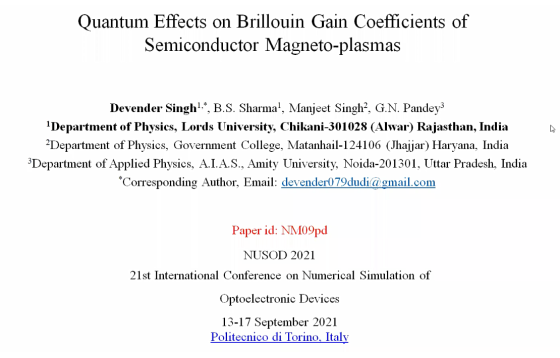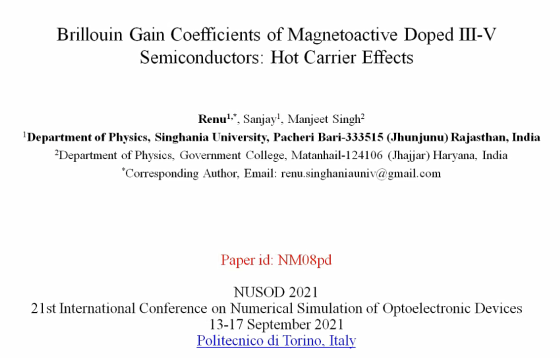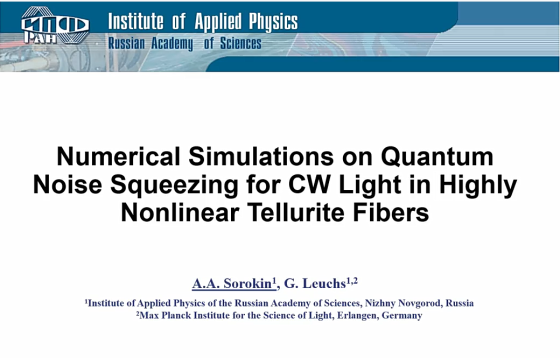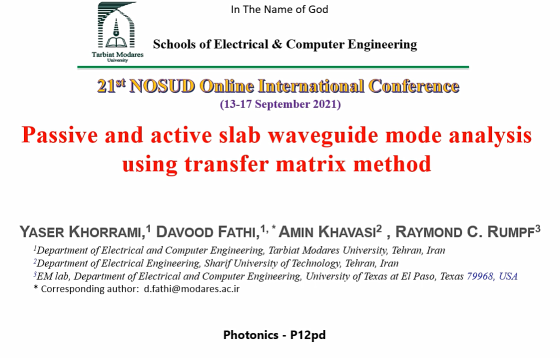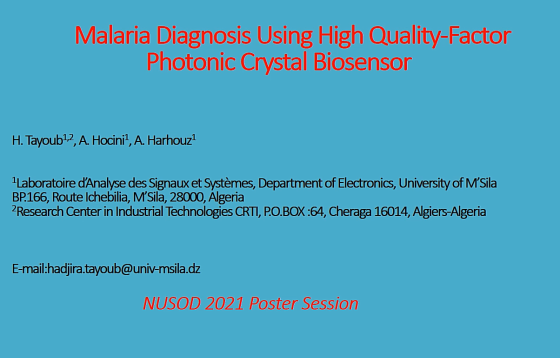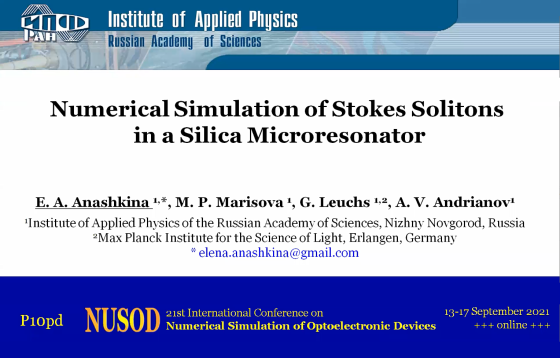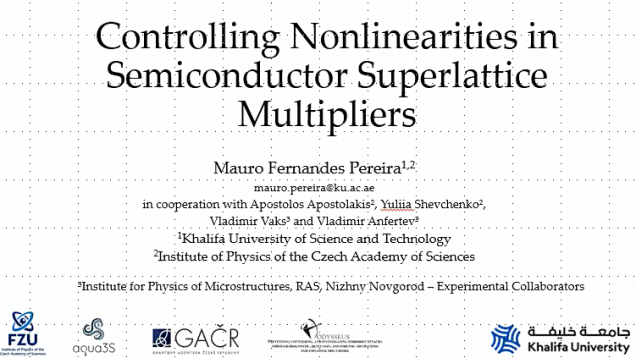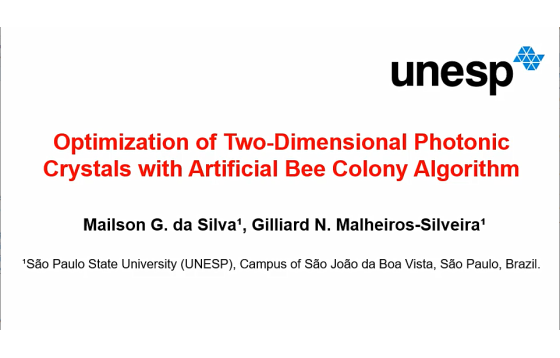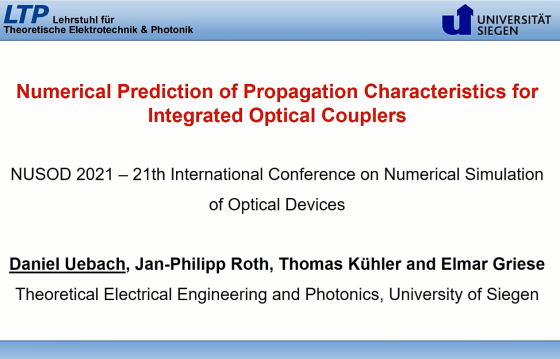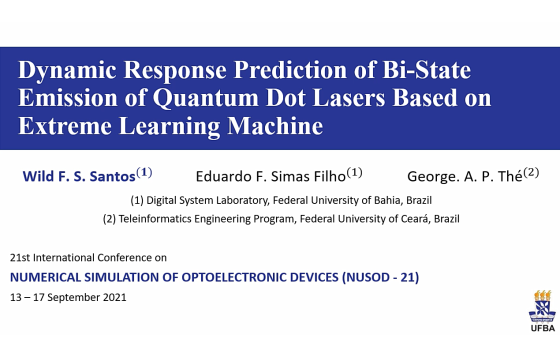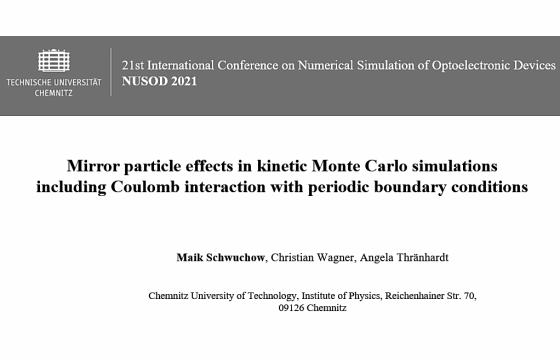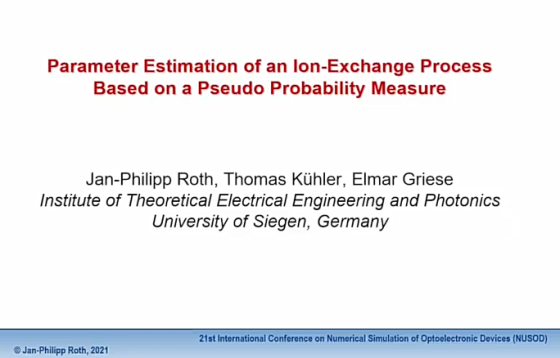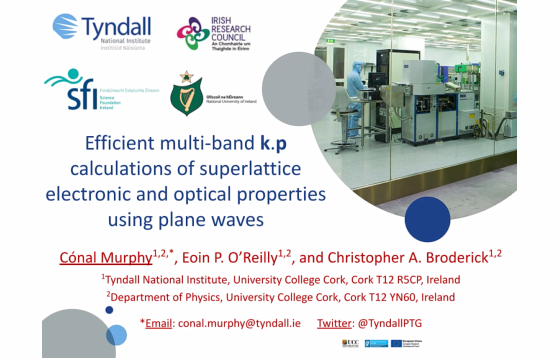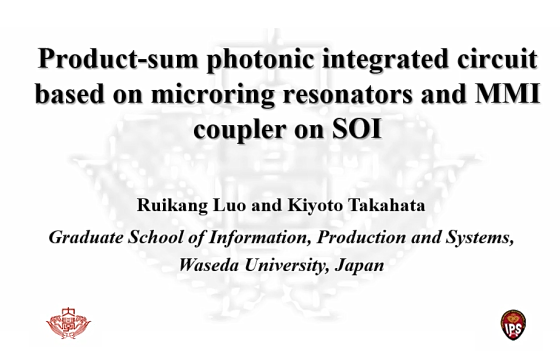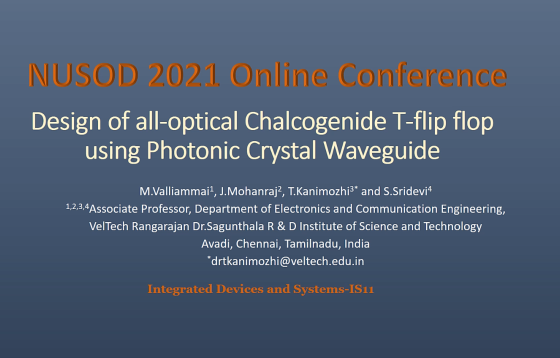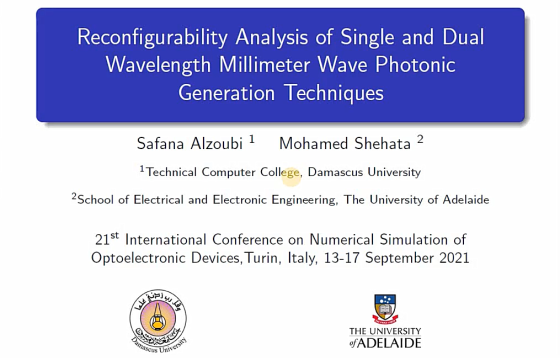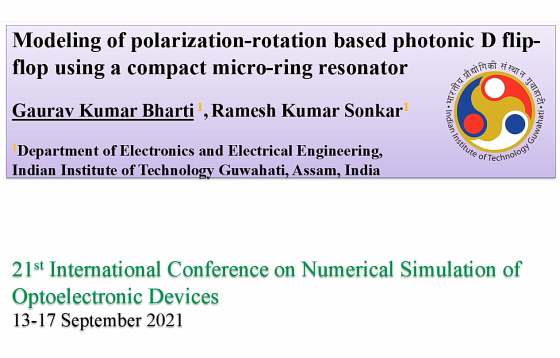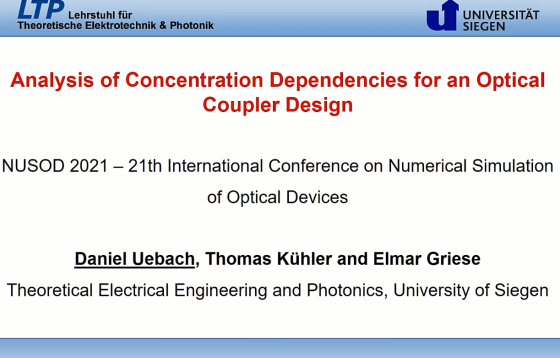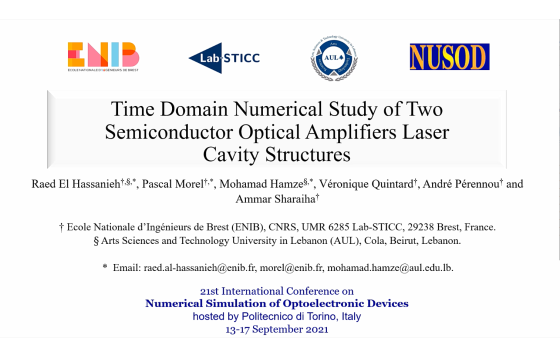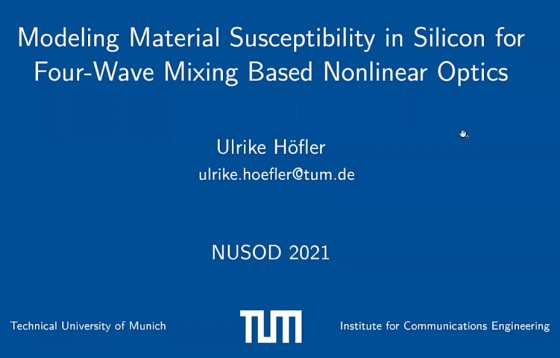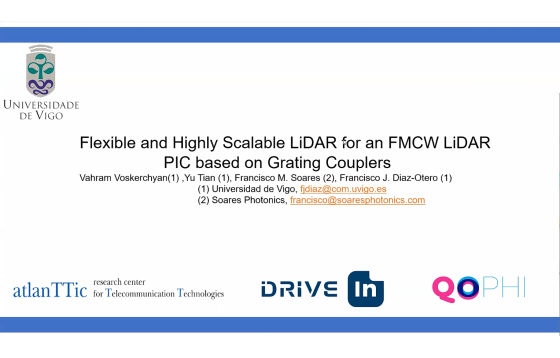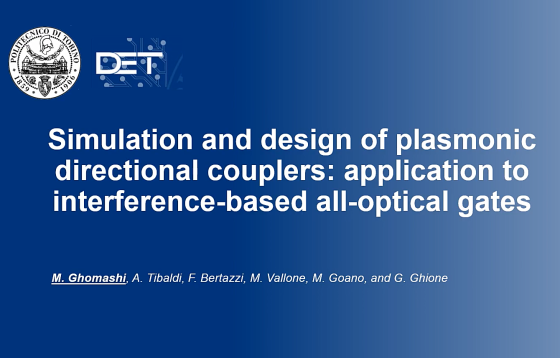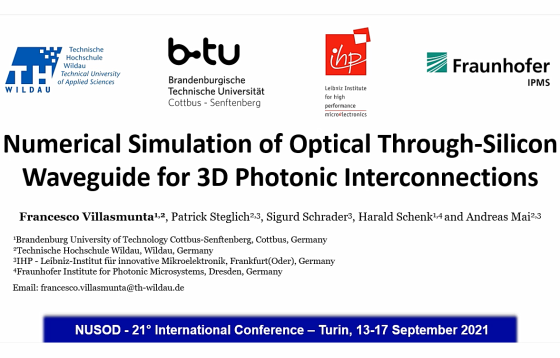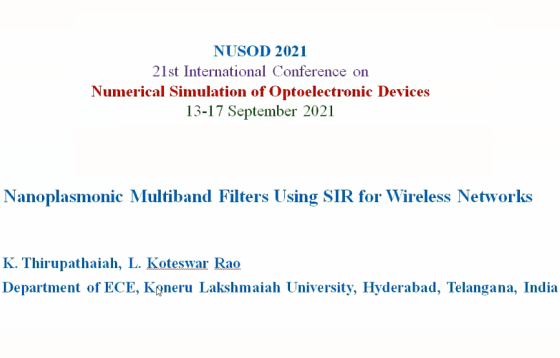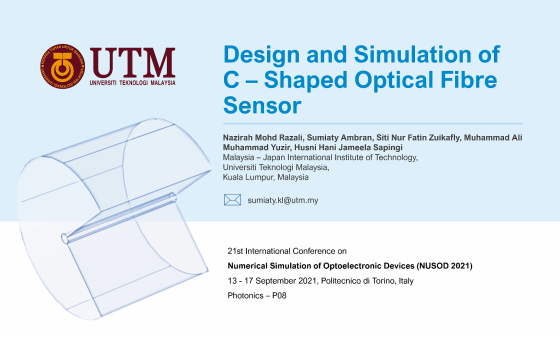


The modified Sagnac interferometer with a phase-shift approach is given here for measuring Ta2O5 thin-film thickness. The input light is split into reference and sample beams. A real-time signal measurement is performed to get the output intensities of both beams with four different polarizer settings. These intensities can then be effectively converted into film thickness.
IS13pd–6‑Channel Plasmonic Demultiplexer using Metal/Insulator/Metal Based Circular Resonators with Silver Nano Rods Arrays
In this paper, we design and propose a compact 6-channel plasmonic demultiplexer (DMUX), utilizing of metal/insulator/metal (MIM) circular resonators (CRs) with metal nano‑rod arrays (NRAs). The resonance wavelengths of the output ports depend on the number of metallic NRAs in the CRs. For the numerical examination of the designed scheme, the finite‑difference time‑domain (FDTD) technique […]
IS12pd–Modelling of mid-IR on-chip Doppler FMCW LiDAR System
We propose a generic model that can simulate the functioning of doppler LiDAR system from given target speed, working distance and modulation pattern. Simulations confirm that our model yield system performance consistent with the theoretical calculations.
LD14pd–Optimization of Double-Circular-Hole Photonic-Crystal Surface-Emitting Lasers
Photonic-crystal surface-emitting lasers (PCSELs) with double circular holes in the unit cell are optimized in terms of slope efficiency and single-mode stability. For PC-SELs with double-hole shift of one-fourth and one-third lattice constant, the area ratios of two holes are optimized separately and fall in completely different range; moreover, their threshold gain discrimination values are […]
LD13pd–Numerical Modeling and Experimental Validation of Tm- and Er-Doped Tellurite Microsphere Lasers
We report an efficient semi-analytical method for modeling of CW rare-earth ion-doped microlasers. We numerically simulated threshold pump powers and expected laser wavelengths for in-band pumped Tm- and Er-doped tellurite glass microspheres. With the increase of Q-factor, the laser wavelength grows smoothly for Tm and there are jumps from the C-band to the L-band for […]
NM09pd–Quantum Effects on Brillouin Gain Coefficients of Semiconductor Magneto-plasmas
Using QHD model, quantum effects (QEs) on (steady-state and transient) Brillouin gain coefficients of semiconductor magneto-plasmas are investigated. Numerical analysis is made for n-InSb crystal – CO2 laser system.
NM08pd–Brillouin Gain Coefficients of Magnetoactive Doped III-V Semiconductors: Hot Carrier Effects
Hot carrier effects (HCEs) of an intense pump wave on (steady-state and transient) Brillouin gain coefficients of magnetoactive doped III-V semiconductors are investigated. Numerical analysis is made for n-InSb crystal – CO2 laser system.
P11pd–Numerical Simulations on Quantum Noise Squeezing for CW Light in Highly Nonlinear Tellurite Fibers
Quantum noise suppression of light is desirable for a lot of applications including quantum communication, quantum sensing, and detection of gravitational waves. There are several ways to obtain squeezed light including Kerr squeezing in optical fibers. Silica fibers are commonly used for this purpose. Here we propose to use highly nonlinear tellurite glass fibers for […]
P12pd–Passive and active slab waveguide mode analysis using transfer matrix method
We present a general approach for numerical mode analysis of the multilayer slab waveguides using the Transfer Matrix Method (TMM) instead of the Finite Difference Frequency Domain (FDFD) method. TMM consists of working through the device one layer at a time and calculating an overall transfer matrix. Using the scattering matrix technique, we develop the […]
P13pd–Malaria Diagnosis Using High Quality-Factor Photonic Crystal Biosensor
In 2019, they accounted for 67% (274,000) of all malaria deaths worldwide, according to the World Health Organization; the african region was home to 94% of malaria cases and deaths. In this context, it is vital to detect malaria more effectively and accurately, we have developed in this paper a two dimensional photonic crystal biosensor […]
P10pd–Numerical Simulation of Stokes Solitons in a Silica Microresonator
We report a novel generation regime of Stokes solitons numerically found in a silica microresonator in the framework of the generalized Raman-modified Lugiato-Lefever equation. These solitons can be attained for certain parameters in the anomalous dispersion range when the pump is in the normal dispersion range. We also demonstrate the Stokes soliton-like experimental spectrum similar […]
MM08–Controlling Nonlinearities in Semiconductor Superlattice Multipliers
A hybrid approach combining Nonequilibrium Green’s Fuctions with solutions of the Boltzman equation, delivers voltage and intrinsic asymmetry control of nonlinearities in semiconductor superlattices. Unexpected nonlinear behavior is predicted for high harmonics as a result of voltage control.
MM07–Optimization of Two-Dimensional Photonic Crystals with Artificial Bee Colony Algorithm
We applied the Artificial Bee Colony algorithm for the complete band gap maximization of a two-dimensional photonic crystal. The band diagram and band gap calculation were carried out by the software MIT Photonic Bands, and these results were used in the algorithm’s fitness function. The optimum structure was compared to the literature which used genetic […]
MM06–Numerical Prediction of Propagation Characteristics for Integrated Optical Couplers
The field-assisted ion-exchange process for manufacturing integrated optical couplers is multivariate. For this reason, a precise prediction of the optical propagation characteristics of manufactured devices is needed. Two numerical calculation methods are compared with measured results for an integrated coupler to assess its applicability for a precise prediction.
MM05–Dynamic Response Prediction of Bi-State Emission of Quantum Dot Lasers Based on Extreme Learning Machine
Dual-state emission is an phenomenon which takes place in Quantum Dot Lasers at different temperature and operating conditions. In this study, we investigate that issue from a nonlinear regression model based on Extreme Learning Machine, which revealed to be able to predict the spectrally resolved transient response of InAs/InGaAs quantum dot laser with error performance […]
MM04–Mirror particle effects in kinetic Monte Carlo simulations including Coulomb interaction with periodic boundary conditions
We investigate the photoluminescence of low-dimensional disordered materials, as used e.g. in solar cells, by performing kinetic Monte-Carlo simulations of exciton hopping with periodic boundary conditions. In order to perform numerically efficient calculations, the box length Lbox should be as small as possible while maintaining physically meaningful results during the presence of exciton-exciton-interaction. Exciton-exciton interaction […]
MM03–Parameter Estimation of an Ion-Exchange Process Based on a Pseudo Probability Measure
For the realization of integrated optical waveguide components, needed for integrated photonic circuits, a promising approach to manufacturing is their embedding in thin glass sheets by thermal diffusion processes. Because prototyping or manufacturing small batch series is costly, appropriate numerical simulations are used in order to allow an accurate characterization. However, in practical applications it […]
MM02–Efficient multi-band k·p calculations of superlattice electronic and optical properties using plane waves
Solving the multi-band k·p Schrodinger equation for a quantum-confined heterostructure using a reciprocal space plane wave approach presents several advantages compared to conventional real space approaches such as the finite difference or element methods. In addition to allowing analytical derivation of the heterostructure Hamiltonian, a desired level of accuracy in the computed eigenstates can generally […]
IS08–Product-sum photonic integrated circuit based on microring resonators and MMI coupler on SOI
A product-sum photonic integrated circuit consisting of SOI-based cascaded microring modulators and a 4×1 multimode interference coupler is proposed for CNN computing. A basic product-sum operation is numerically demonstrated for 2×2 matrix.
IS11–Design of all-optical Chalcogenide T-flip flop using Photonic Crystal Waveguide
The field of designing photonic crystal based all optical devices is the recent research trend as it remarkably promises an opportunity to diminish circuit complexity. The main intention of this present work is to contrive novel photonic crystal waveguide based all optical chalcogenide T-flip flop. Finally the efficient performance is numerically demonstrated to show elevated […]
IS10–Reconfigurability Analysis of Single and Dual Wavelength Millimeter Wave Photonic Generation Techniques
Optimizing the operating conditions of a Mach-Zhender modulator (MZM) for different design requirements has drawn considerable research interests due to its key role as an electro-optic (EO) interface in hybrid access radio-over-fiber networks. In this work, we compare the modulation efficiency and the bit error rate (BER) performances of single and dual-wavelength-modulated millimeter-wave (MMW) photonic […]
IS09–Modeling of polarization-rotation based photonic D flip-flop using a compact micro-ring resonator
This paper demonstrates the modeling and simulation of all-optical polarization rotation based clocked D flip-flop using a single micro-ring resonator. The simulated results show the switching time of 0.5 ps and the on-off ratio of 25.27 dB.
IS07–Analysis of Concentration Dependencies for an Optical Directional Coupler Design
An integrated directional coupler is designed for a bidirectional communication on a single waveguide by separating both data streams within individual branches. Thereby, an adjustment of the numerical aperture of the transmitting branch is a promising optimization approach. As the couplers are manufactured by a field-assisted diffusion process the numerical aperture is directly related to […]
IS06–Time Domain Numerical Study of Two Semiconductor Optical Amplifiers Laser Cavity Structures
In this paper, we develop a time domain model of a Semiconductor Optical Amplifiers Fiber Cavity Laser (SOAFCL). The time domain characteristics of two different cavity configurations (bidirectional and one-way cavity) are compared. The study shows that one-way cavity is less noisy compared to the bidirectional cavity which presents higher output power.
IS05–Modeling Material Susceptibility in Silicon for Four-Wave Mixing Based Nonlinear Optics
We model the third-order material susceptibility chi3 in silicon waveguides for integrated optics. Analysis of four-wave mixing in these waveguides requires an in-depth study of material nonlinearity – in contrast to modeling light propagation in fibers with the optical nonlinear Schrödinger equation. We include electronic and atomic lattice (Raman) responses of the material and present […]
IS04–Flexible and Highly Scalable LiDAR for an FMCW LiDAR PIC based on Grating Couplers
In this paper three types of Silicon Photonics OPA architectures are proposed and investigated. Edge-fire optical phased array, that simplifies the design of the OPA. Second architecture is OPA with grating coupler antennas. Maximum steering angle for edge-fire OPA is ±44◦, FWHM is 0.10986◦. For GC OPA steering angle is ±20◦ and FWHM=1.003116◦. Third architecture […]
IS03–Simulation and design of plasmonic directional couplers: application to interference-based all-optical gates
The paper is focused on the design of optical components based on plasmonic multi-slot directional couplers. In particular, the design of an all-optical gate is proposed, whose operation is based on the coupling between three plasmonic slots. The device input wavelength is 1550 nm, typical of long-haul telecommunication systems. The device footprint is as small […]
IS02–Numerical Simulation of Optical Through-Silicon Waveguide for 3D Photonic Interconnections
Optical interconnections are a promising step forward to overcome the intrinsic limitations of electrical interconnections in integrated circuits. In this work, we present a finite element method (FEM) simulation study of a dielectric waveguide etched through the full thickness of a silicon substrate. In particular, it is investigated the effect of the bridge-to-core size ratio […]
P09–Nanoplasmonic Multiband Filters Using SIR for Wireless Networks
This article demonstrates design and numerical analysis of the multiband band-pass and band-stop filters using an even-mode MIM waveguide-based step impedance resonator (SIR) and simultaneously operated at optical bands O & L bands (185.72 THz and 230.02 THz) with higher efficiency (>35 dB)
P08–Design and Simulation of C-Shaped Optical Fiber Sensor
This paper presents a C-shaped optical fiber sensor for refractive index measurement. The design and simulation of the C-shaped optical fiber were conducted via Wave Optics Module-COMSOL Multiphysics®. The refractive index measurement ranging from 1.30-1.40 is performed. The simulation results showed that the C-shaped design has the potential to act as a refractive index sensor […]

